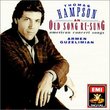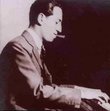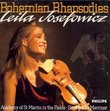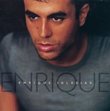| All Artists: Charles Ives, Kenneth Schermerhorn, Nashville Symphony Title: Ives: Symphony No. 2; Robert Browning Overture Members Wishing: 0 Total Copies: 0 Label: Naxos American Original Release Date: 1/1/1951 Re-Release Date: 9/19/2000 Genre: Classical Styles: Forms & Genres, Theatrical, Incidental & Program Music, Historical Periods, Classical (c.1770-1830), Modern, 20th, & 21st Century, Symphonies Number of Discs: 1 SwapaCD Credits: 1 UPC: 636943907627 |
Search - Charles Ives, Kenneth Schermerhorn, Nashville Symphony :: Ives: Symphony No. 2; Robert Browning Overture
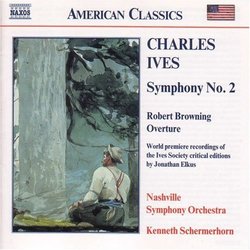 | Charles Ives, Kenneth Schermerhorn, Nashville Symphony Ives: Symphony No. 2; Robert Browning Overture Genre: Classical
Don't let the budget label, little-known conductor, and regional orchestra fool you--here's an outstanding disc of important music, brilliantly interpreted and played. Even if you have the grand, but cut, old Leonard Berns... more » |
Larger Image |
CD DetailsSynopsis
Amazon.com Don't let the budget label, little-known conductor, and regional orchestra fool you--here's an outstanding disc of important music, brilliantly interpreted and played. Even if you have the grand, but cut, old Leonard Bernstein performance of the symphony on Sony, this one's different. Naxos uses a new critical edition replete with changes in tempo, dynamics, and orchestration. The symphony may be the funniest in the repertory, flinging wildly disparate folk and pop tunes together in imaginative ways that defy rhyme or reason, yet make perfect sense in the context of Ives's innovative soundworld. The Robert Browning Overture is no mere curtain-raiser, but one of Ives's toughest works, moving from a mysterious opening in the strings to braying brass and pounding drums. This is one of the best releases in Naxos's outstanding American Classics series. Don't miss it. --Dan Davis Similarly Requested CDs
|
CD ReviewsCharlie done right Bob Zeidler | Charlton, MA United States | 09/30/2000 (5 out of 5 stars) "Following hard on the heels of Schermerhorn's Nashville Symphony Orchestra recording (also on Naxos) of some essential music of Howard Hanson is this new release of Ives' Symphony No. 2, coupled with his Robert Browning Overture. Schermerhorn and his Nashville group show signs of being fitting successors to Hanson himself, as well as Leonard Bernstein, Michael Tilson Thomas, Leonard Slatkin and Gerhard Schwarz, for definitive recorded performances of core-repertory American music. With the release of this album, earlier recordings of Ives' 2nd Symphony are, for all intents and purposes, pass , and, in key passages in the work, wrong. This new critical edition, prepared by Jonathan Elkus of the Charles Ives Society, corrects nearly 1,000 long-standing manuscript errors that have been repeated in recordings (and performances) dating back at least as early as Bernstein's late-'50's New York Philharmonic Orchestra recording on Columbia. Many of the corrections are quite minor, and may pass unnoticed by most listeners. But anyone familiar with this work will recognize the major corrections, including one to the concluding "raspberry" that thumbs its nose at the music establishment in which Ives served as both member and iconoclast. To say more here is to deprive you of the enjoyment of your own first hearing of this performance, which Schermerhorn has recently "taken on the road" with his orchestra, receiving rave reviews recently for a performance at Carnegie Hall. The discmate, Ives' "Robert Browning Overture," is altogether more challenging for both musician and listener, coming, as it does, from a later period in Ives' compositional life when his music seemed to focus on more cosmic themes. It has seldom been recorded, and here receives a performance that is every bit as definitive as the one of the 2nd Symphony. The Nashville Symphony Orchestra handles this difficult work with aplomb, as might well have been predicted if one thinks of Nashville as being one of the three domestic centers of the universe (along with New York and Los Angeles) for the ready availability of superb studio musicians. At a time when the major labels are in a state of disarray and retrenchment for failing to anticipate changing public tastes in music (not necessarily for the better), Naxos keeps raising the bar, releasing albums of significant, and well-performed and -recorded, music almost before you can ask "What's next?" And Naxos has provided some of the best Ives liner notes available anywhere: Nicely researched and very well written, they are a model of musicological clarity and historical accuracy. Recommended completely without reservation. At any price. Bob Zeidler" Stand up and use your Ears like a Man! Thomas F. Bertonneau | Oswego, NY United States | 11/18/2000 (5 out of 5 stars) "Interest in Charles Ives (1874-1954) peaked in the 1970s. I remember playing the Bernstein LP of the "Holidays" Symphony with the volume cranked up on the cabinet stereo in the family house - especially "The Fourth of July" - in order to consternate my parents or visiting relatives. Stokowski's pioneering LP of the Fourth Symphony served the same purpose "pour epater les bourgeoises." Later I enjoyed the privilege of talking at length to Nicolas Slonimsky, who took up the Ivesian cause, much to the detriment of his conductorial career, already in the 1920s. Slonimsky, no artistic slouch himself (although entirely modest), said that he knew Ives to be a genius within seconds of meeting him, in New York, in 1925. He insisted on the immediacy of the impression. A genius, yes, but, I dare say, also an amateur, for Ives left scores perpetually incomplete, flitted between styles (often in the same piece), and felt the need to justify his experiments in prose explanations which now seem tedious and irrelevant. Music cannot be rescued by explanations. Ives's best work comes from his Yale period and briefly thereafter, when a few mentors like Parker still exercised some cautionary influence over him. The Second Symphony (1902-1910) is probably his most finished score and admits the experimental, nose-thumbing elements within a context that testifies to the composer's competency in traditional forms. Bernstein legendarily put the Second Symphony into the repertory by performing it, in a radio broadcast, in 1951. Bernard Hermann made an LP of it in the late 1960s for London. The Second has probably been recorded a dozen times. The new recorded performance under Kenneth Schermerhorn, who leads the Nashville Symphony Orchestra, forms part of the Naxos "American Classics" series. During the Ives mania of the sixties and seventies, enthusiasts overexposed this symphony, and this fact certainly challenges any interpreter who takes up this score today. Every listener will anticipate the jokey "wrong-note" chord at the climax; every listener will already expect the quotations of "Columbia," "Camptown Races," and "Turkey in the Straw." The novelty aspect of Ives has long since ceased to be novel. Starting from this premise, Schermerhorn emphasizes the Brahms- and Dvorák-derived elements of Ives's musical language, and the non-ornamental American feeling in his original material. The music is still quirkier by far than Chadwick, but we sense from Schermerhorn's reading that Ives might have had a much more productive development had he not turned aside from composing to devote his life to insurance. The "Browning Overture" shows the other side of the Ivesian coin. Almost bereft of the typical quotations of Americana, it explores the heavily chromatic language - familiar from the denser paragraphs of the two piano sonatas - that Ives shared with other experimentalists like Ruggles and Becker. "Stand up and use your ears like a man," as Ives is supposed to have said when someone in the audience complained about a piece by Henry Cowell. Stokowski recorded this forty years ago. Schermerhorn makes his own case for the music. I like the interpretation of the Second Symphony and would recommend it over the other available versions." Wonderful recording of American masterpieces ghills123 | West Des Moines, IA USA | 10/02/2000 (5 out of 5 stars) "Anyone familiar with Ives' music most likely knows his great Symphony No. 2 - a grand romantic work that matches the European masters in its technical assuredness, while suprising the listener with constant references to various American musical idioms. The Robert Browning Overture, however, is perhaps the last of Ives' major orchestral works to get a digital recording. And what a fine recording it is. Using the Ives Society's recent critical edition, Kenneth Schermerhorn and the Nashville S.O. give yet more evidence that Ives is among the greatest musical geniuses of this century. In turns dark, enigmatic, violent and ecstatic, it is a profound evocation of Browning and his writings. It is also important to point out that not only is this recording valuable for the works it presents, but also because the performances are excellent and the sound qaulity superb. The latter is especially important in a work of such highly contrasted volumes as the Browning Overture. Definitely a disc worth having."
|

 Track Listings (6) - Disc #1
Track Listings (6) - Disc #1